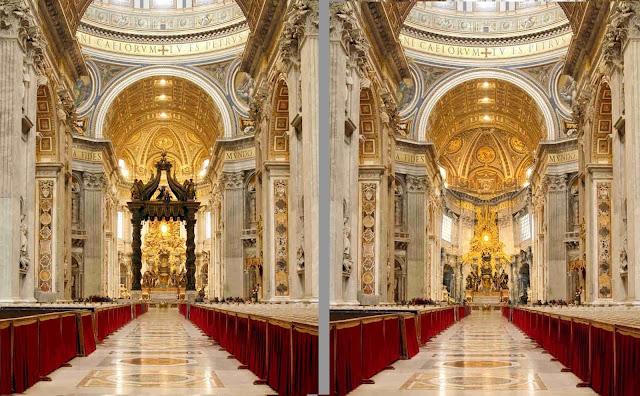To demonstrate the point, I thought we'd take a look at what is assuredly the most famous ciborium of all, that of St. Peter's Basilica in Rome. One can find few more grandiose and large liturgical spaces than it. So then, what would happen is we removed the ciborium that sits over top the high altar of St. Peter's?
The function of the ciborium is aptly shown in this example. Effectively, the high altar disappears into the architecture. Our focus and attention shifts away from the altar itself and instead we start to focus our attention on the alabaster window with its gilt sculptural details surrounding it. We look at the golden coloured apse with its sculptural details and also at the statuary depicting the four Doctors of the Church.
Finally, after taking all of that in, we might finally notice that there is an altar there.
By contrast, when the ciborium is present, it becomes a flag, drawing our attention to what it covers, the altar. From a visual, hierarchical point of view, it very quickly becomes obvious what the centre of attention is.
This function was also accomplished by other elements, such as the reredos, in later forms of liturgical architecture, but in an age of freestanding altars, the ciborium (along with the predella) is an absolutely critical part of ensuring that our liturgical architecture appropriately presents to people the proper focus and hierarchy of a church's components.















